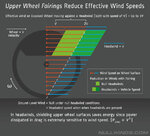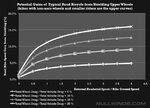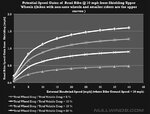This morning I had the first 450 watt motor installed in my eProdigy Whistler. The Achiever Coaxial Motor has been available for years in 3 different power configurations but this is the first 450 watt in North America. The price for this upgrade has not yet been determined but my guess is around $200. Installation involved more than just a simple motor swap; a totally new and modern LCD panel contains many added features such as battery voltage, temperature, wheel size from 28 inches all the way down to 6 inches in 2 inch increments and motor wattage display. The trip distance does not disappear when the panel is switched off but is retained; it always bothered me that the display went off and trip mileage disappeared whenever I stopped for more than 10 minutes. It is much better now. In my opinion, the new panel alone is worth the price of the upgrade.
Now for the motor. My 350 watt was originally a pedelec only, with a torque sensor. After a defective bearing in the original motor, I received a new motor with a throttle and a speed sensor. The speed sensor is not as responsive as the torque sensor but I appreciated the ability to use the throttle when stuck at an intersection in too high a gear. And the torque sensor used to lurch forward each time I rested my foot on the pedal at a stop. The throttle was not very responsive and was not of much use for anything except emergency starts in high gear. The new motor is much quieter and builds speed slowly when pedaled but is noticeably more powerful. The throttle response is also much more powerful. It started to rain just as I got home so I am charging the battery while waiting for the sun.
Whether this motor becomes a production model depends in part on my review so let me tell you that I asked to keep the motor after taking the very first ride on it. My recommendation would be that this upgrade is a No-Brainer. Bill
Now for the motor. My 350 watt was originally a pedelec only, with a torque sensor. After a defective bearing in the original motor, I received a new motor with a throttle and a speed sensor. The speed sensor is not as responsive as the torque sensor but I appreciated the ability to use the throttle when stuck at an intersection in too high a gear. And the torque sensor used to lurch forward each time I rested my foot on the pedal at a stop. The throttle was not very responsive and was not of much use for anything except emergency starts in high gear. The new motor is much quieter and builds speed slowly when pedaled but is noticeably more powerful. The throttle response is also much more powerful. It started to rain just as I got home so I am charging the battery while waiting for the sun.
Whether this motor becomes a production model depends in part on my review so let me tell you that I asked to keep the motor after taking the very first ride on it. My recommendation would be that this upgrade is a No-Brainer. Bill







